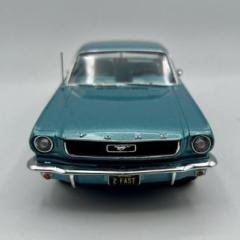-
Posts
143 -
Joined
-
Last visited
About Plumcrazy Preston
- Birthday 04/19/1965
Previous Fields
-
Are You Human?
yes
-
Scale I Build
1:25
Profile Information
-
Full Name
Frank P. Holden
Recent Profile Visitors
1,988 profile views
Plumcrazy Preston's Achievements

MCM Friend (4/6)
-
I did not make this thread to ask for advice from others. I already know what I need to know now that I'm left to my own devices. I posted it to reveal my discoveries on my own to share with you all like a good soul. Sharing is caring. I'm just a soul whose intentions are good. Oh, Lord please don't let me be misunderstood.
-
I've just conducted my paint lab work outside my apartment with my postal scale and my calculator and here is what I have come up with; I have an AS college degree so I know some algebra. The specific gravity of paint is quite greater than that of the thinner. The paint is heavier or denser so unequal weights per equal volumes of each product has to be taken in to consideration. The different paints by pigment types measured so closely on the scale I will just use a blanket average weight in grams for them all. I take it the convention in panting is to mix by fluid volumes and not by weights. Doing it by weight will make things much less messier for me. I use grams instead of avoirdupois ounces because grams are much smaller (lighter) units and much more precision on the scale can be attained. My scale is calibrated in both English and metric weights. My scale is only precise to the nearest tenth for ounces but there are 28.3495 grams per ounce. A gram is nearly 1 of 28 divisions of an ounce. In metric mode, my scale is only precise to the nearest whole gram. Grams are not fractionalized on the scale readout. There's not quite 3 grams per 1/10th of an ounce. Empty Paasche 1 oz. jar with lid and seal = 50 grams Empty Testors Enamel Jar, 0.25 fluid ounces, with lid = 30 grams Testors Enamels (from 0.25 fl. oz jars) = 36 grams/fluid ounce [average weight of flat, gloss, semi-gloss, metallic and non-metallic pigments] Testors Universal Enamel Thinner = 22 grams/fluid ounce Small Hex Nut used as a paint mixing agitator in jar = 0 grams, not measurable on digital electronic postal scale Mixing Ratio for Testors Enamels and Enamel Thinner per label on can = 3 parts paint/2 parts thinner for gloss; 3 parts paint/1 part thinner for flat; 2 parts paint/1 part thinner for semi-gloss Weight Formulae for Mixing Testors Enamels and Universal Enamel Thinner Let t = thinner weight in grams and p = paint weight in grams For 3 parts paint/2 parts thinner for gloss: t = 0.42p For 3 parts paint/1 part thinner for flat: t = 0.21p For 2 parts paint/1 part thinner for semi-gloss: t = 0.31p
-
Thank you 45, it should be dry for most of the wintertime but again it might be too cold outside to set up the paint tent. What are optimal weather conditions for airbrushing outside even inside a painting tent? I can generally tell if it's too windy and rain or snow makes it out of the question. -humidity? -temperature? Yes, Mother Nature and Father Time can actually slow me down. I have to play it by ear, weather-wise. Better yet, is there a good book on this hobby I can pick up and read?
-
Right now, it's 71 degrees outside with 69% humidity in Lawton, Oklahoma. It's overcast outside and looking like rain. Is this a less than ideal weather condition to airbrush outside right now even inside a special folding tent designed to be a portable paint booth? Winds are 15 mph south and dew point is 61 degrees. I cannot spray paints inside my apartment and have no special ventilation system for that express purpose.
-
That said, my plan is still to carefully record information. Gun handloaders work up loads from loading bench manuals and test-fire them at the range to check results. Like painting, there are many variables like powders, primers, case dimensions and bullet weights. Each and every gun and round is a physical law unto itself. Serious riflemen in military sniper training and in shooting matches, try to hit dimes consistently at 1,000 yards. Once the elusive nit is finally discovered, that load gets "etched in stone" as it were. I will use the "loading bench" approach to this hobby. When I finally get a paint mixture that gives me results I like, I will stick with my guns as they say. Yes, even in the shooting sports, one has to test specific loads in specific guns in specific weather just the same.
-
Oooops, the cat's now out of the bag. I forget to edit that message for posting here. My handle as shown here is NOT my true legal name. No idiot in his right mind would ever reveal is true legal name on forums like this full of perfect strangers but I got a bit careless. So now you all know my true legal first name. I can guarantee you that B. is not my true legal middle initial and Preston isn't my true legal surname.
-
Now where does that leave me? I will have to set up my own outdoor lab one day, weather permitting in SW Oklahoma, with my electronic digital postal scale, my notepad, my pencil, my pill cups, my pipettes and my calculator to get these weights per unit volume down pat and recorded. Does anybody here hand-load gun ammunition with reloading manuals? Does anybody here understand working up loads? I'm a man of level measurement and precision. I hate guesswork. I hate wasting money, time and energy. I want to work up paint mixtures as near perfectly as feasibly possible. I don't know how to get stuff to "milky consistency". It's not something measurable. It's not something one can hold a steel ruler to. I lack that skill. I believe in pursuing consistency in one's workmanship through accurate weights and measures, data recording, lab testing and numbers crunching. I'm a former automobile mechanic by trade. I had torque wrench's, hole gauges, thickness gauges, dial indicators, steel rulers and shop manuals with printed data in them to work with. Painting is pure physics, algebra, meteorology and chemistry.
-
Here is their verdict: Hello, After consulting with our Research & Development team and resident airbrush expert, we are able to provide the following information: As far as the weight of the paints, each individual paint has a unique weight, depending on pigments used. With that being said, our team does not feel that weight is key in the thinning process. There is no fixed amount of thinner to be added to paint for airbrushing. Factors such as type of airbrush and compressor are more influential than the paint. A good starting place is 1/2 paint, 1/4 thinner and 1/4 gloss clear. All thinner and paint settles too fast; the gloss clear keeps everything in suspension. The goal is to achieve a milky like consistency, not runny or watery. We hope you find this information helpful. If you have any additional questions or concerns please do not hesitate to contact us. Sincerely, Jenn Gitter Product Support Representative
-
I need my plastic pill cups still on mail order. Those are for cleaning up airbrush parts. I still am waiting for a response from Rust-Oleum. What else could I do paint practice on the cheap besides the car bodies tbill offered to send me? Plastic drink cups? Campbell's soup cans? 2-litter plastic soda bottles? 1 gallon plastic spring water jugs? In SW Oklahoma I live in an apartment and cannot spray indoors. I have to wait until the weather is right to put up my paint booth tent outside up. We had 55 mph winds the other day here. I have limited space to store stuff too. I am not actually working on model cars right now but a model diesel truck tractor. The hood, cab, visor, sleeper, air cleaners, sleeper steps, steering column, battery box and cab step have to be painted in body color. The cab interior ceiling will be painted in body color as well as the underside of the Kenworth conventional hood. The interior bucket will be white. A semitrailer model is to follow the tractor. Following that will be a jet plane and then a helicopter.
-
Thanks, tbill, but my plan is to practice first on plastic part runner material from model kits. I'm not out to make the hobby industry super rich with expensive painting flops if I can help it. I'm still waiting for a few things before I can start my painting practice as a greenhorn airbrush person.
-
I don't plan on priming my plastic for mixed Testors enamel as a base coat. Just a light scuff with 1,000-grit sandpaper followed by a warm-soapy-water cleaning of parts and complete air drying as a prep. I don't like to sand too much or the rivets molded into the truck cab and sleeper unit get worn down. I had to sand and scrape off with an Xacto knife a bunch of mold flash on the edges of the hood, cab and fenders. Over the years, I've painted a bunch of parts with a hand brush and Testors enamel and some parts with Testors flat or semi-gloss enamels in spray cans and never found priming necessary. Testors enamels seem to bond well and level well with model kit plastics.
-
Does lacquer thinner harm any of your plastic models in any way when used as a base paint mixer? My current project is an EXPENSIVE amt brand truck model kit, the Kenworth W-925 tractor. I plan to do a painting test session using runner material from the model kit. I will first follow mixing directions from Testors/Rust-Oleum as a starting point. If I follow manufacturer directions and recommendations, I might have a better chance of getting satisfactory results right off the bat and possibly reduce expenditures of time, money, energy and resources. I also have a new can of Klean-Strip lacquer thinner from Walmart. I need more economical material for clean-up after painting than enamel thinner. Besides, I will need the lacquer thinner for Testors Dullcote and Glosscote mixing later on. Various customer reviews on amazon.com indicate 1:1 ratio is preferred with these products. I should also do a trial of top coating over my test runner material with cured base enamel with spare decals applied.






